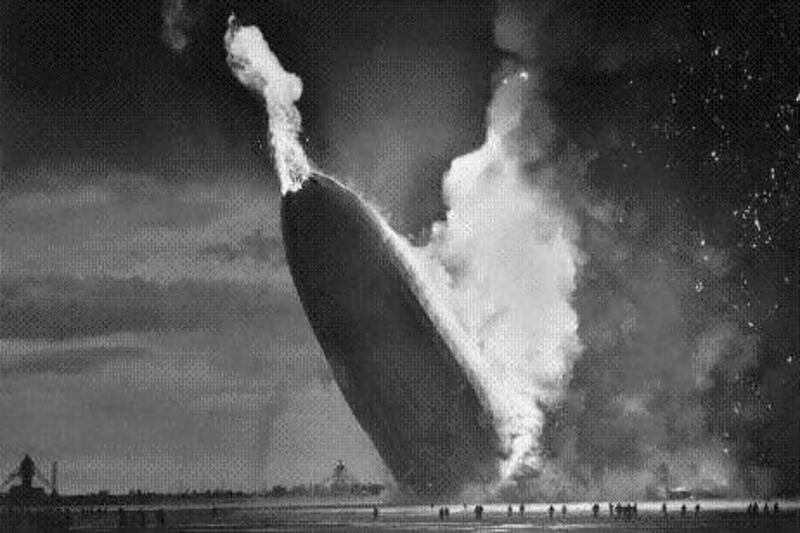The "hydrogen economy" is like the cure for the common cold: people have been talking about it for decades, but it never seems to get much closer.
The promise is well-known. In principle, hydrogen is a source of clean, carbon-free and plentiful energy. In practice, there are more than a few problems.
For a start, hydrogen may be the most plentiful element in the universe, but it isn't just lying around waiting to be extracted from the ground like fossil fuels. As the lightest of all gases, most of it zoomed back into space aeons ago, and what is left is hard to access or distribute.
Then there's the Hindenburg problem. The spectacular fire that brought the hydrogen-filled German airship crashing down in 1937 has scorched itself into the collective consciousness as a warning against using this highly flammable gas.
Yet a flurry of recent breakthroughs may put the hydrogen economy back on the agenda, in a different guise - as the "methanol economy". And they may also have major implications for nations producing fossil fuels - such as the UAE.
Talk of the methanol economy began to emerge in the 1990s, when a Nobel-winning US-based chemist, George Olah, began a campaign to highlight the benefits of this chemical, which amounts to methane with an oxygen atom stuck on.
That single extra atom makes a world of difference, allowing methanol to retain methane's energy-packed arrangement of four hydrogen atoms around a carbon atom, while turning the bulk material from a gas into a liquid.
The result is a fuel that packs more energy per litre than hydrogen, yet no longer needs a whole new infrastructure to get that energy into vehicles. Indeed methanol can - and has - been used in conventional cars.
Yet the presence of a carbon atom means methanol isn't a "clean" fuel, and burning it creates that most notorious of greenhouse gases, carbon dioxide. It is possible to strip the clean hydrogen out of methanol, but the reaction is energy-intensive and pricey, and still leaves the carbon dioxide problem - a raft of issues that not even Olah's brilliance could resolve.
But now a team of scientists has taken a big step in the right direction, by finding a way of freeing the hydrogen at everyday temperatures and pressures.
Led by Matthias Beller of the University of Rostock, the joint German-Italian team have succeeded in finding a catalyst for the job - that is, a chemical that can deliver the hydrogen from the methanol without being affected itself.
Reporting their breakthrough in the journal Nature last month, the researchers explain how they created their "chemical midwife" using the metal ruthenium, a member of the same group of elements as platinum and palladium, well-known for their catalytic properties.
By combining ruthenium with nitrogen and phosphorus atoms, the team were able to make the catalyst dissolve in water and convert methanol to formaldehyde, releasing hydrogen atoms along the way. And it works at around 65°C to 95°C and room pressure, so it should be relatively cheap.
It still creates carbon dioxide along with the hydrogen, but an advance reported in 2009 by scientists in Singapore suggests this need not be a problem. They found another catalyst that can magically convert carbon dioxide into methanol. But Beller and his colleagues believe the real significance of their work lies in its impact for the Cinderella of the energy world: the fuel cell.
People have been talking about the wonders of fuel cells for even longer than the hydrogen economy, of which it forms a key part.
Invented by the Welsh chemist, William Grove, more than 170 years ago, the fuel cell is essentially a refillable battery fuelled by a constant supply of power-generating molecules.
In its most basic form - the "proton exchange membrane" (PEM) fuel cell - hydrogen is passed over a platinum catalyst, which strips off electrons and turns them into an electric current until they recombine with protons and oxygen to form water, the sole waste product.
The technology came to prominence in the 1960s, when the US space agency Nasa fitted hydrogen-oxygen fuel cells to spacecraft to generate electricity plus their handy waste product. Yet despite their efficiency and lack of carbon dioxide waste, PEM fuel cells have failed to reach their potential because of their reliance on hydrogen.
Beller and his colleagues think their catalyst could change all that. By fitting vehicles with fuel cells and ruthenium-based converters, we could fill up with methanol at a conventional fuel station, and then drive off. The hydrogen would then be generated on-board.
Still, there are technical challenges. So far Beller and his team have only succeeded in turning methanol into hydrogen at a rate of a few millilitres per minute - around 100,000 times less than what would be needed for a commercial system.
Chemists are well-used to achieving colossal scale-up, however, so this is not necessarily a show-stopper. Then there's the cost and practicality of building ruthenium-based converters - though again these may not be insuperable.
The biggest obstacle to the development of this technology, and of the hydrogen or methanol economy generally, is more basic.
In the end, neither hydrogen nor methanol will ever be "fuels" in the same sense as coal, oil or natural gas - because they need so much processing before being ready for use.
That in turn will always put them at a disadvantage relative to conventional fuels - at least, as long as the "dirty" nature of fossil fuels is ignored.
For now, the sheer convenience and cheapness upside of fossil fuels still outweighs their carbon dioxide downside.
Unless and until global warming goes back up the political agenda, the hydrogen economy and its methanol equivalent will remain on the back burner, simmering away but never catching alight.
Robert Matthews is visiting reader in science at Aston University, Birmingham, England.






